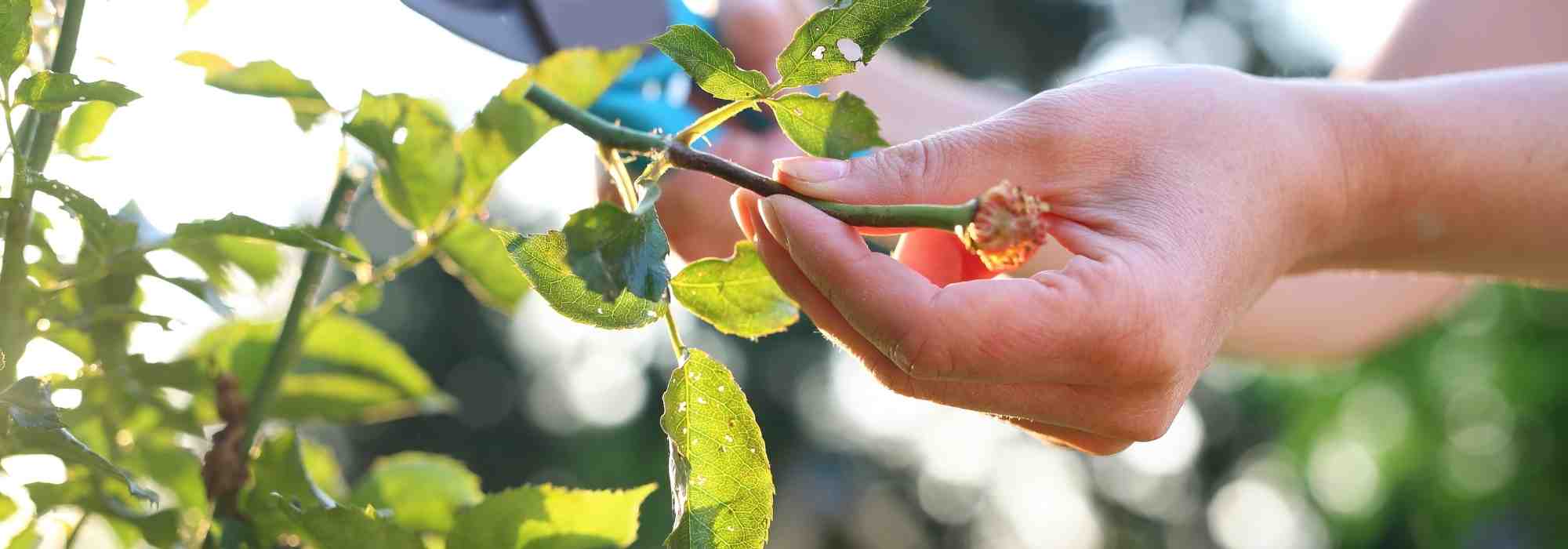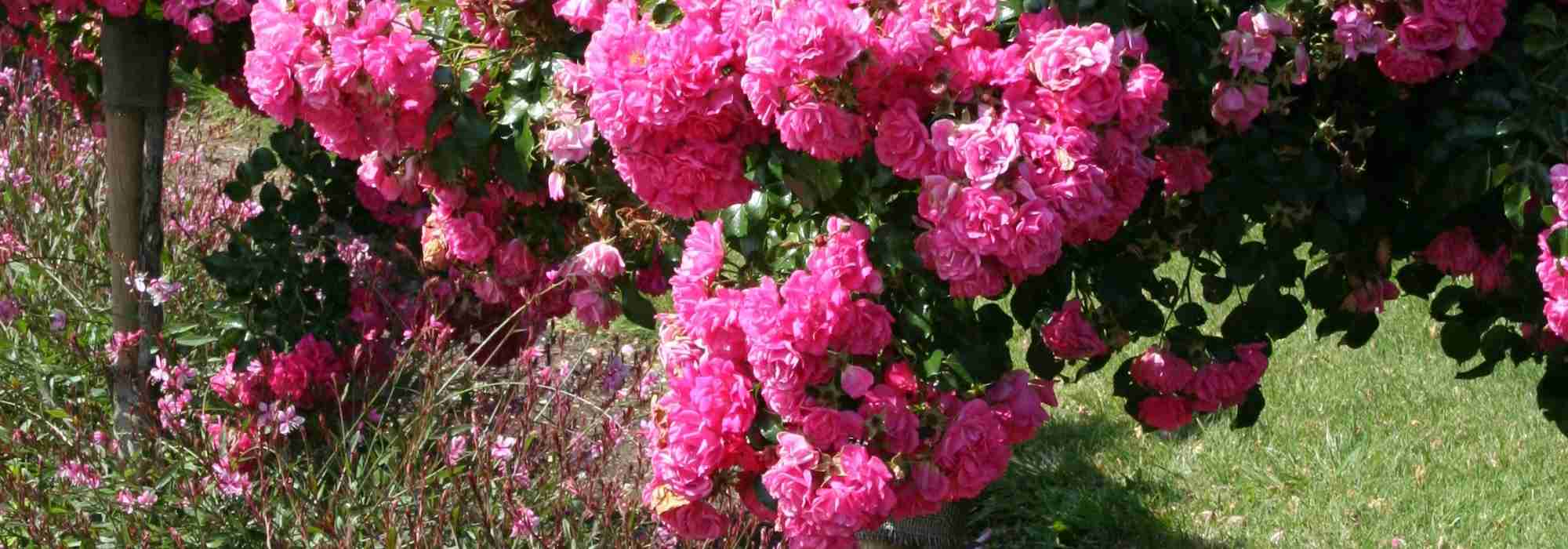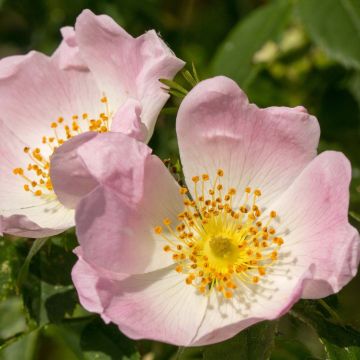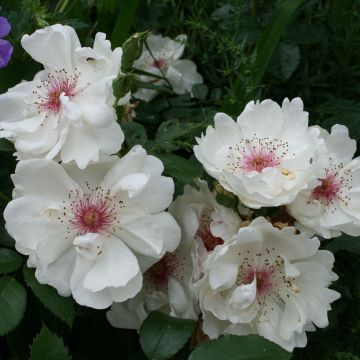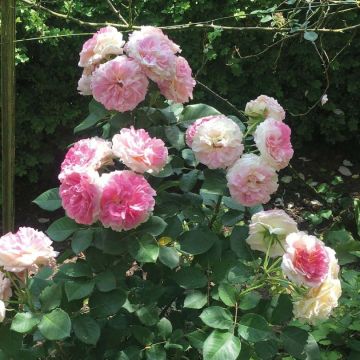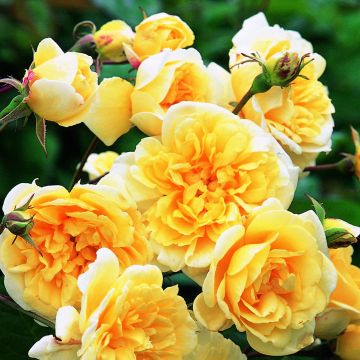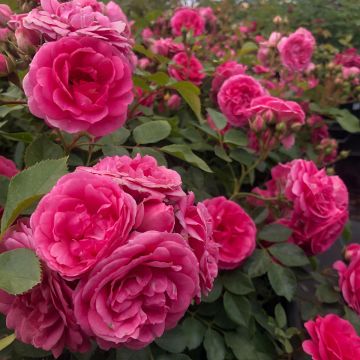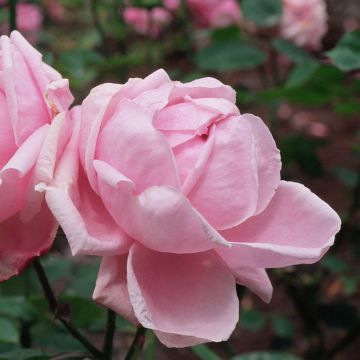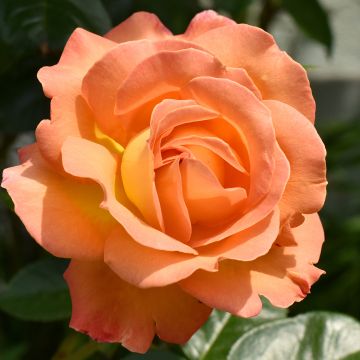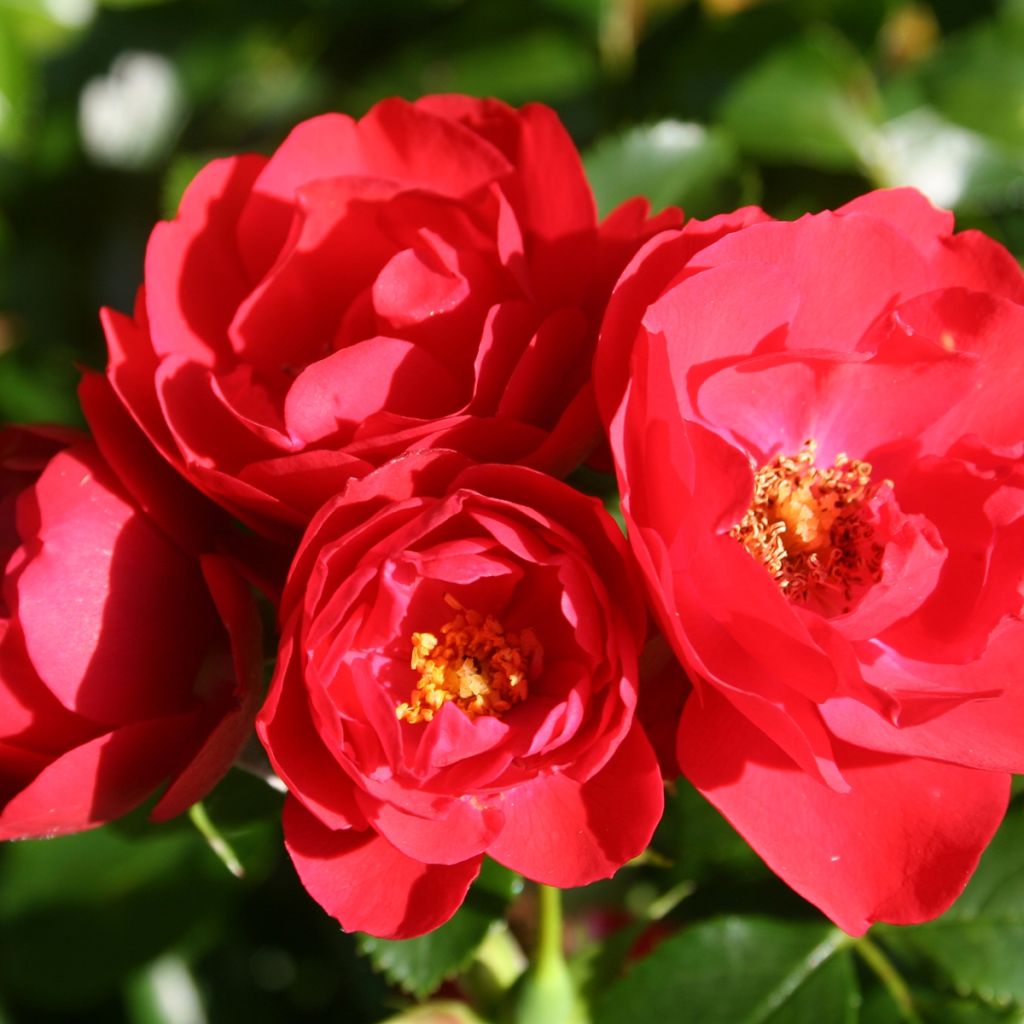

Rosier tige Kadora® Decorosier®
Rosa x floribunda Decorosier Kadora - Standard Rose
Rosa x floribunda Decorosier® Kadora®
Rose
Special offer!
Receive a €20 voucher for any order over €90 (excluding delivery costs, credit notes, and plastic-free options)!
1- Add your favorite plants to your cart.
2- Once you have reached €90, confirm your order (you can even choose the delivery date!).
3- As soon as your order is shipped, you will receive an email containing your voucher code, valid for 3 months (90 days).
Your voucher is unique and can only be used once, for any order with a minimum value of €20, excluding delivery costs.
Can be combined with other current offers, non-divisible and non-refundable.
Home or relay delivery (depending on size and destination)
Schedule delivery date,
and select date in basket
We guarantee the quality of our plants for a full growing cycle, and will replace at our expense any plant that fails to recover under normal climatic and planting conditions.

Description
The Kadora Standard Rose is a variety of with clustered flowers that combines many qualities. Its flowering, with its vibrant red colour, is particularly long and abundant. It offers exceptional resistance to diseases, which has earned it the German ADR label, and its beautiful foliage remains evergreen in mild climates. It requires little maintenance. Give it a special place in the garden or even in a large pot on the patio, and it will be a stunning decoration for many years.
Standard roses are obtained by grafting a variety (in this case, the Decorosier Kadora rose) onto a single, upright stem from a different rose (Rosa canina, R. laxa or R. multiflora). The graft is performed at the top of the stem. In very cold regions, it may be necessary to protect the rootstock during winter.
The Decorosier KADORA Standard Rose was launched in 2006 by Guillot. This variety belongs to the floribunda and polyantha rose family, which produce flowers grouped in clusters. Grafted onto a stem, it has a characteristic habit, with a slender, vertical 'trunk' bearing a large, rounded crown. Its thorny stems carry abundant, glossy foliage, divided into small, tough, and serrated leaflets of dark green colour. It blooms abundantly from May to June until October to November, if regularly pruned and provided with enough water. The semi-double flowers are gathered in clusters of about ten units and are 4 to 6 cm (2in) wide. The tight buds open into open cups, revealing a small heart of yellow stamens. This rose has no fragrance. The plant retains its leaves during winter if the weather is not too harsh.
DECOROSIERS are shrub roses with a spreading habit. They can be used in various ways, such as edging lawns, in flower beds, on slopes, or in planters. They adapt to all types of soil, in sunny or semi-shaded locations. They offer long and exceptional flowering on healthy, glossy, semi-evergreen foliage. Naturally resistant to diseases, they do not require any treatment.
ADR is the label of the German Federation of Rose Breeders. The ADR designation is only given to varieties that have passed the strictest tests worldwide. The plants are tested simultaneously at 10 different locations, under various soil and climate conditions, for several years. The tests evaluate hardiness, perennial character, and flowering without the use of any pesticides.
This Kadora Standard Rose is a magnificent specimen, to be placed in the centre of a bed of delicate perennials, along a pathway, near the patio, in a well-maintained small garden, or in a large pot on the balcony. Its red colour stands out from afar in the garden and pairs well with white, orange, blue, or yellow flowers. For example, you can plant nepetas, chamomiles, perennial salvias, foxgloves, nigellas, or tall gypsophila alongside it. A groundcover composed of silver basket or lady's mantle will highlight it perfectly.
Rosa x floribunda Decorosier Kadora - Standard Rose in pictures
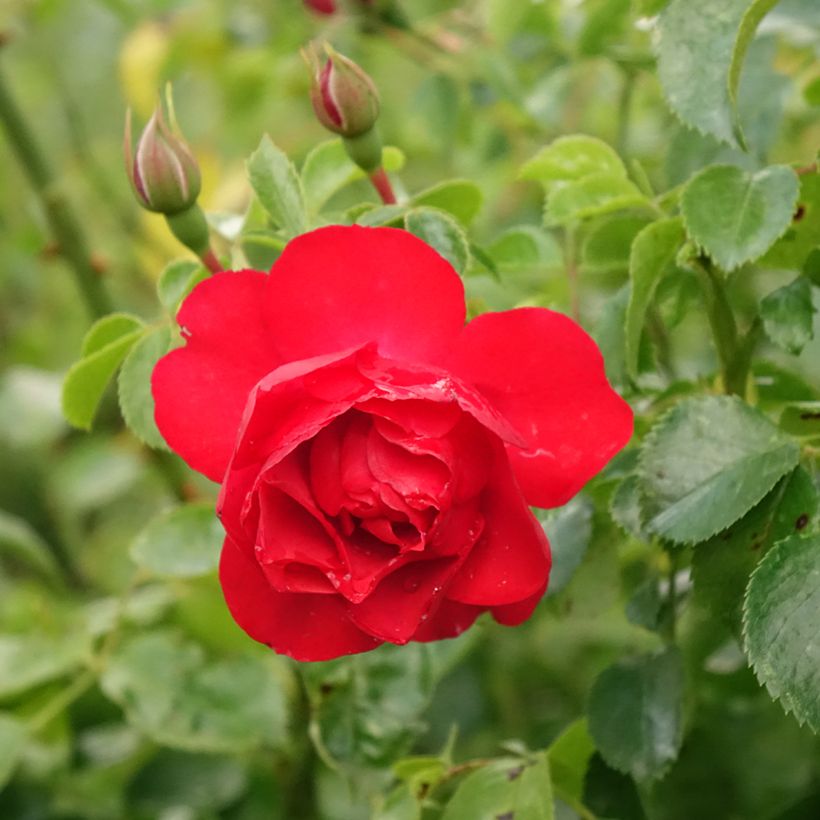

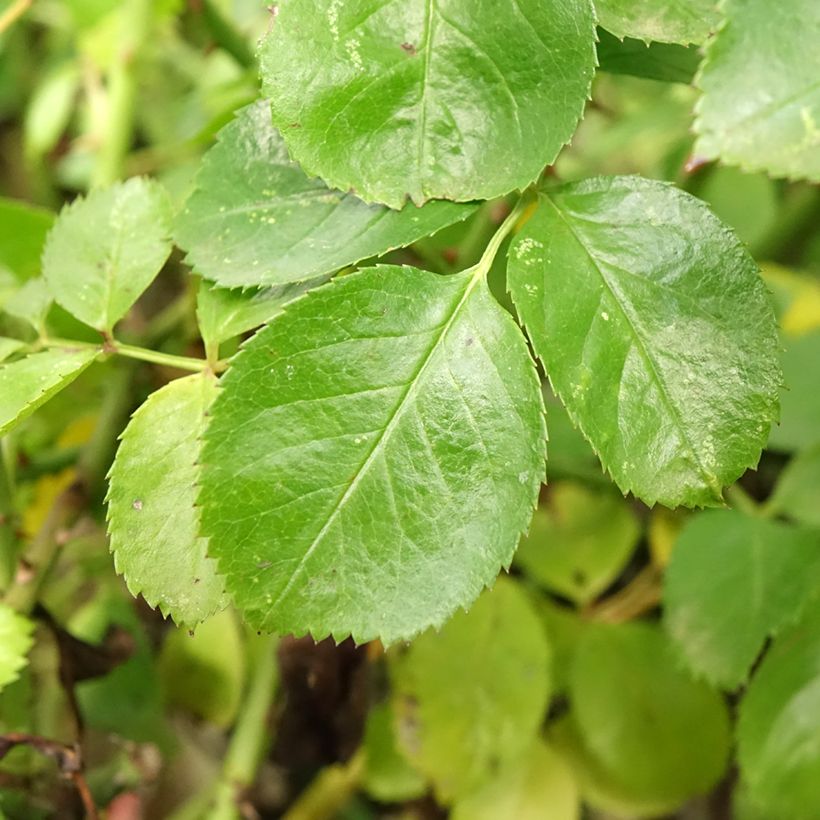

Plant habit
Flowering
Foliage
Botanical data
Rosa
x floribunda
Decorosier® Kadora®
Rosaceae
Rose
Cultivar or hybrid
Planting and care
Plant the 'Kadora' Syandard Rose from November to March, in ordinary, well-tilled, and well-drained soil. Roses prefer clay soils, rather heavy than light. In soil that is too sandy, too compact, or too dry in summer, it is preferable to incorporate compost, decomposed manure, or humus at the bottom of the planting hole. However, this rose dislikes waterlogged soils in winter. Place it in a sunny location, or at most in partial shade. Roses are demanding plants, so a specific fertiliser application will be beneficial at the start of the growing season, and regularly throughout the flowering period. To encourage reblooming, regularly remove faded flowers. Floribunda rose varieties are more vigorous and more floriferous than large-flowered rose varieties. Therefore, prune the stems to about a quarter of their length (from 4 to 6 buds from the base of the stem) at the end of winter. Always prune above an outward-facing bud to encourage bushiness and prevent branches from becoming tangled in the centre of the branches.
In regions with very cold winters, it is advisable to protect the grafting stock of stem roses (the 'trunk') by wrapping it in a thick winter fleece.
Planting period
Intended location
Care
Planting & care advice
This item has not been reviewed yet - be the first to leave a review about it.
Similar products
Haven't found what you were looking for?
Hardiness is the lowest winter temperature a plant can endure without suffering serious damage or even dying. However, hardiness is affected by location (a sheltered area, such as a patio), protection (winter cover) and soil type (hardiness is improved by well-drained soil).

Photo Sharing Terms & Conditions
In order to encourage gardeners to interact and share their experiences, Promesse de fleurs offers various media enabling content to be uploaded onto its Site - in particular via the ‘Photo sharing’ module.
The User agrees to refrain from:
- Posting any content that is illegal, prejudicial, insulting, racist, inciteful to hatred, revisionist, contrary to public decency, that infringes on privacy or on the privacy rights of third parties, in particular the publicity rights of persons and goods, intellectual property rights, or the right to privacy.
- Submitting content on behalf of a third party;
- Impersonate the identity of a third party and/or publish any personal information about a third party;
In general, the User undertakes to refrain from any unethical behaviour.
All Content (in particular text, comments, files, images, photos, videos, creative works, etc.), which may be subject to property or intellectual property rights, image or other private rights, shall remain the property of the User, subject to the limited rights granted by the terms of the licence granted by Promesse de fleurs as stated below. Users are at liberty to publish or not to publish such Content on the Site, notably via the ‘Photo Sharing’ facility, and accept that this Content shall be made public and freely accessible, notably on the Internet.
Users further acknowledge, undertake to have ,and guarantee that they hold all necessary rights and permissions to publish such material on the Site, in particular with regard to the legislation in force pertaining to any privacy, property, intellectual property, image, or contractual rights, or rights of any other nature. By publishing such Content on the Site, Users acknowledge accepting full liability as publishers of the Content within the meaning of the law, and grant Promesse de fleurs, free of charge, an inclusive, worldwide licence for the said Content for the entire duration of its publication, including all reproduction, representation, up/downloading, displaying, performing, transmission, and storage rights.
Users also grant permission for their name to be linked to the Content and accept that this link may not always be made available.
By engaging in posting material, Users consent to their Content becoming automatically accessible on the Internet, in particular on other sites and/or blogs and/or web pages of the Promesse de fleurs site, including in particular social pages and the Promesse de fleurs catalogue.
Users may secure the removal of entrusted content free of charge by issuing a simple request via our contact form.
The flowering period indicated on our website applies to countries and regions located in USDA zone 8 (France, the United Kingdom, Ireland, the Netherlands, etc.)
It will vary according to where you live:
- In zones 9 to 10 (Italy, Spain, Greece, etc.), flowering will occur about 2 to 4 weeks earlier.
- In zones 6 to 7 (Germany, Poland, Slovenia, and lower mountainous regions), flowering will be delayed by 2 to 3 weeks.
- In zone 5 (Central Europe, Scandinavia), blooming will be delayed by 3 to 5 weeks.
In temperate climates, pruning of spring-flowering shrubs (forsythia, spireas, etc.) should be done just after flowering.
Pruning of summer-flowering shrubs (Indian Lilac, Perovskia, etc.) can be done in winter or spring.
In cold regions as well as with frost-sensitive plants, avoid pruning too early when severe frosts may still occur.
The planting period indicated on our website applies to countries and regions located in USDA zone 8 (France, United Kingdom, Ireland, Netherlands).
It will vary according to where you live:
- In Mediterranean zones (Marseille, Madrid, Milan, etc.), autumn and winter are the best planting periods.
- In continental zones (Strasbourg, Munich, Vienna, etc.), delay planting by 2 to 3 weeks in spring and bring it forward by 2 to 4 weeks in autumn.
- In mountainous regions (the Alps, Pyrenees, Carpathians, etc.), it is best to plant in late spring (May-June) or late summer (August-September).
The harvesting period indicated on our website applies to countries and regions in USDA zone 8 (France, England, Ireland, the Netherlands).
In colder areas (Scandinavia, Poland, Austria...) fruit and vegetable harvests are likely to be delayed by 3-4 weeks.
In warmer areas (Italy, Spain, Greece, etc.), harvesting will probably take place earlier, depending on weather conditions.
The sowing periods indicated on our website apply to countries and regions within USDA Zone 8 (France, UK, Ireland, Netherlands).
In colder areas (Scandinavia, Poland, Austria...), delay any outdoor sowing by 3-4 weeks, or sow under glass.
In warmer climes (Italy, Spain, Greece, etc.), bring outdoor sowing forward by a few weeks.


































